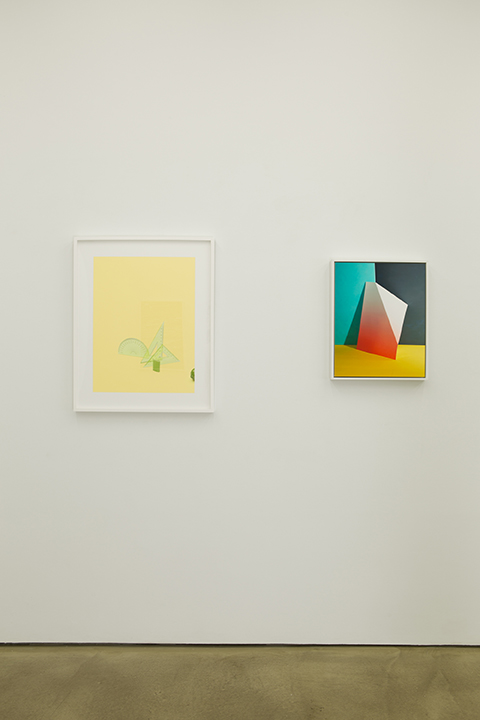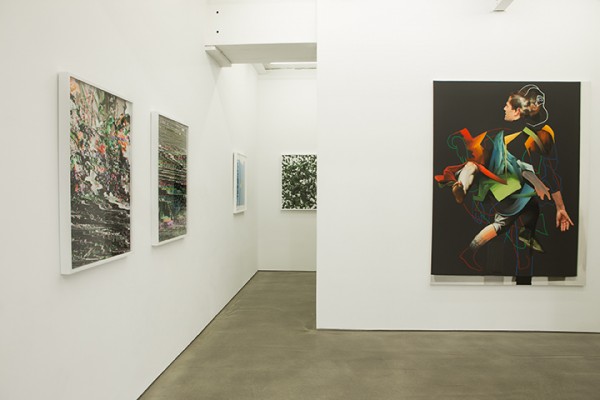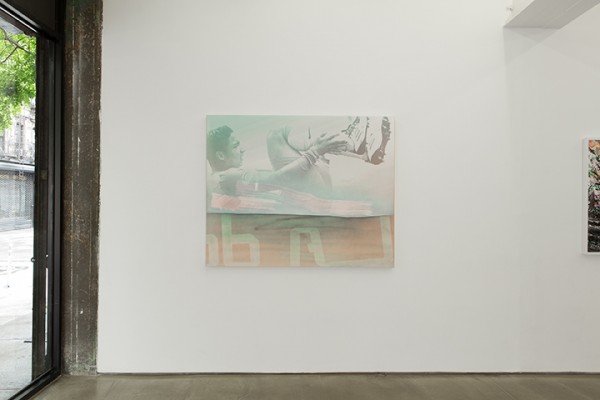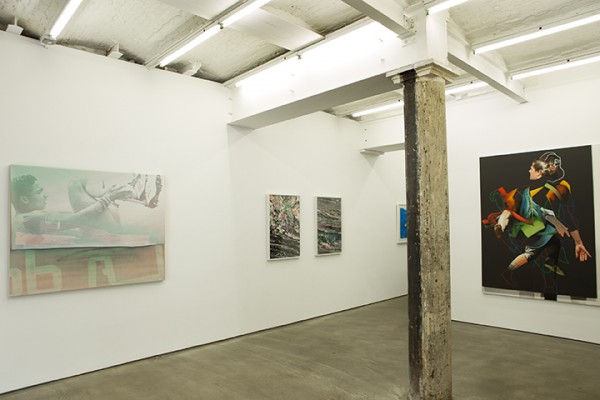Frameshift
Friday, 13 June 2014
There is a gallery talk with useful pictures and some of the artists tomorrow (Saturday) at 3:00pm.
“The six artists in Frameshift collide with and attempt to negotiate the technical image as encoded by the camera. The practices represented occupy the divide between the hand-crafted image historically available and attributable to a visual artist and the technical language with which the photograph systematically attempts to replicate reality line by line. These artists examine a world in which the photographic image records, implicates, and shares every conceivable human action through a network of devices. This vast stream of visual communication offers an ever-increasing number of platforms for identities to take shape through a carefully crafted stream of data originating from the same device. The artists in Frameshift prod and transform existing images and fill the frame of their cameras with invented tableaus to coax out the seams of ideological structures encoded in the technically written network of images.
Frameshift is an investigation into practices that visualize linguistic edits to the technical language of the photographic image while compressing multiple histories of image making and vision technology. The catalyst for this investigation emerged out of the manipulation of a fixed image by literally altering the code. Barry Stone converts the binary data of a digital photograph into a text file, which he then edits, and then converts it back
into a corrupted form of the original image. Stone’s process introduces a genetic copying error that exposes the photograph to evolutionary forces. In another line of inquiry, the fixed technical image becomes a base layer upon which a construction of the self is built in response. Pieter Schoolwerth’s paintings compress multiple attempts to locate the body and identity over an edited photograph or a scan of a human figure, like an attempt to form an identity across multiple networked platforms. Wendy White modifies the real world contextual staging of a photograph and injects it into a system of painting structures as a self-contained object that lives in forced cohabitation with indefinite marks and textual remainders. Lorne Blythe, Erin O’Keefe, and Heather Cleary each appear to accept the fixed technical image on its own terms, but insist on forcing their own complicating system of change through the camera’s pixel sieve. Lorne Blythe creates atypical vision tests in which construction and appropriation methods are simultaneously placed into opposition and made indistinguishable. Heather Cleary decontextualizes mundane objects to create an image embedded with uncertainty through what appears to be a very particular set of instructions of mysterious mathematical or subcultural origin. Erin O’Keefe invents an unbound architectural language by arranging a network of objects and photographic elements for the camera, rendering unreliable spatial relationships into a single plane.
The resulting works from these investigations resist the finality of arrival and perfect replication advertised by the technically produced image. Instead, the course of execution changes due to the insertion of an unanticipated command or a failure to distinguish user input from system commands. In the end, we observe discoloration or informational errors or an awkward amalgam of elements that point to a belief in a process of continual reformation of the photographic image. The evidence presented through these works suggests that the laws that govern our reality are not fixed and that these artists are not merely subject to an all-pervasive technical language, but rather active participants in the continuing construction of a photographic language.
Frameshift is curated by useful pictures, an artist-run investigation into current directions in photographic practice. We focus on artwork created after photography and the internet co-evolved to produce a culture of instant and global image sharing. We highlight artistic practices that consider this torrent of image traffic and actively complicate photographic understandings alongside a networked digital culture.” – useful pictures




